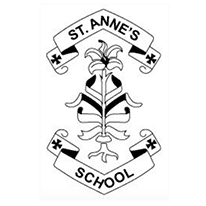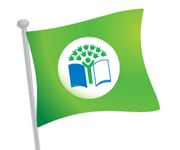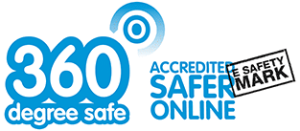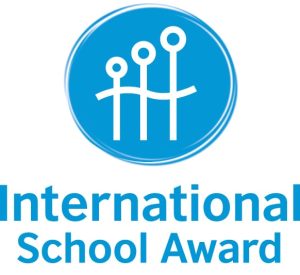Welcome to Year 1 – Autumn 2023
I am delighted to start this academic year in Year 1, this is a new year group for me and I am looking forward to teaching a new curriculum. This year I will be leading phonics/early reading and English in school and am looking forward to developing this area. I will be teaching Year 1 four days a week; the class will be taught by Mrs Paterson on a Friday. Mrs Paterson has many years of experience teaching children in the Early Years and Keys Stage 1, she is very excited to join the St Anne’s family. I hope that you and your child are as excited as we are to get this year underway!
Please find below some information about the summer term in our class that you may find useful. If you have any questions, please don’t hesitate to get in touch. My email address is e.taylor104@st-annes-pri.durham.sch.uk
- This term our PE slots are Monday and Wednesday afternoon. Please come to school wearing your PE kit on those days. We are going to be joined this year by colleagues from Education Enterprise who will be working alongside staff and children to upskill and support the teaching of PE.
- Homework is set on a Friday and to be returned by the following Thursday.
- Spellings will be sent home on a Monday and a spelling quiz will take place on a Friday in class.
- Reading – Read Write Inc. – Phonics reading books will be sent home either on a three day or five-day programme. Each week your child will bring home a Book Bag Book linked directly to the RWInc book they have shared in school. Please share the book, talk through the text. Re-read to improve fluency and share the comprehension ‘Questions to chat about’.
- More advice on Year 1 reading can be found here: https://home.oxfordowl.co.uk/reading/reading-age-5-6-year-1/
- https://home.oxfordowl.co.uk/reading/reading-schemes-oxford-levels/read-write-inc-phonics-guide/
- There is a video that you can watch for more information about Read, Write Inc. https://www.youtube.com/watch?v=sjlPILhk7bQ
- A video to help pronounce the sounds http://www.ruthmiskin.com/en/parents/
- Visits/trips: Hardwick Park – Bog Baby hunting. St Anne’s/St Andrew’s Church.
- Any sports festivals / leagues / competitions dates to follow.
- How is a Bog Baby different to a human baby?
- How would I recognise a Bog Baby?
- Why do we call some animals ‘wild’? (science/ literacy
- What would you ask a Park (Zoo) Keeper about animals? (Science/literacy)
- Why would it not be sensible for all animals to live in England ? (Science/Geography/Literacy)
- How are we humans different from most animals? (Science/Art/ Literacy)
- What do we mean by carnivore, herbivore and omnivore? (Science/Literacy)
- What do we need to keep our pets happy? (Science/Literacy
- Who are the minibeasts that live in our school grounds? (Science/Literacy)
- Reflection: Can you create your own non-fiction book on Bog Babies?
| Literacy | Spoken Language
Through discussion, role-play and drama the children will explore the story of Bog Baby by Jeanne Willis. Children will have opportunities to perform poetry in particular favourite Nursery Rhymes. They will follow instructions to make a Bog Baby and demonstrate their understanding in response to questions and stories. They will develop their own narratives about The Bog Baby and in response to other relevant stories. Reading Children will look at fiction and non-fiction books and explore the differences between them. Children will read and understand simple sentences. They will read some common irregular words and use their developing phonics knowledge to decode regular words aloud accurately. They will also begin to answer simple questions about texts. Writing – Composition Children will have several opportunities to develop the skills of writing through a variety of different writing genres including instructions, lists and menus. Children will have opportunities to write simple narratives based on ‘The further adventures of the Bog Baby’. Children will also develop their understanding of a sentence and how to extend their sentences through games and simple exercises. They will meet the terms noun, adjective (describing words) and verbs. Phonics: A daily session teaching reading and writing, which is centred around learning the sounds of the letters (phonics) and then blending them together to read words. The children also learn to break down words into individual sounds in order to write them (see attached for more details). |
| Numeracy | Place Value (within 10) Weeks 1 – 5
Number – addition and subtraction within 10 (weeks 6 -)
Shape
|
| Science | Science – Identify and name a variety of common animals, including fish, amphibians, reptiles, birds and mammals. Identify and name a variety of common animals that are carnivores, herbivores and omnivores; Describe and compare the structure of a variety of common animals (fish, amphibians, reptiles, birds and mammals, including pets) Identify.
Name, draw and label the basic parts of the human body and say which part is associated with each sense. Working scientifically: Children can
|
| PE | Football |
| Art | Drawing: Make your mark – Exploring mark making and line; working and experimenting with different materials through observational and collaborative pieces.
Painting and mixed media: Colour splash – Exploring colour mixing through paint play, using a range of tools to paint on different surfaces and creating paintings inspired by Clarice Cliff and Jasper Johns. |
| DT | DT (linked to Science/Geography) Children will have opportunities to taste fruit from different countries and learn where their fruit comes from. Discuss diet and the importance of healthy eating. Make things using mouldable materials |
| History | History How I’m making History?
The children will interview and older person and handle artefacts. L learn how to build a timeline. Think about how an artefact can be ben changed and the story around it can be changed. Interview somebody who was at school in the 50’s and think about what has changed and stayed the same. |
| Geography | What is our school environment like?
Plan of the school, investigate the grounds, likes and dislikes. How can Bog Baby get around the school? Which way is it for his dinner? To go out and play? If he is getting a certificate from his Headteacher? Where do his friends in Year Four work? |
| Music | Musical vocabulary (Under the sea) – Journey into the unknown and explore under the sea through music, movement, chanting and the playing of tuned percussion instruments.
Pulse and rhythm (Theme: All about me) – Children learn to identify the difference between the pulse and rhythm of a song and consolidate their understanding of these concepts through listening and performing activities. |
| RE | R.E. – What can we learn about Christianity from visiting a church?
This unit introduces children to Christianity by giving them the opportunity to visit a local church, reflect on the atmosphere in the church, and learn about how the church is used for Sunday worship. They will find out about the special role of the vicar. Children will also be introduced to special times in the church through the festival of Harvest. Links will be made to Christian beliefs in God as Creator. This unit will build on any previous work on harvest and the church at the Early Years Foundation Stage. Children will have the opportunity to talk about their own experiences and feelings of special places and times and how they may care for the world. |
| PSHE | Y1 Introduction: Setting ground rules for RSE & PSHE
Y1 Family and relationships – Exploring how families can be different, the characteristics and impact of positive friendships; learning that issues can be overcome, people show feelings differently and that stereotyping is unfair |
| Computing | Computing, digital literacy. E-Safety – Children will complete activities based around the Smartie the Penguin Digital Literacy – Children will research Claude Monet and Serat and create pictures using a paint program. Use a simple word processor to type lists and captions. Key Skills: logging on, saving work and printing |
Further information about the curriculum content can be found on our school website.
Yours Sincerely,
Miss Taylor
Summer Letter
Welcome to the Summer Term in Year 1,
PE this term will be Monday and Wednesday, please could your child come to school in full PE kit and their school jumper or cardigan.
I will continue to take PPA on a Thursday afternoon and my Management Time will be a Tuesday afternoon. Fridays continue to be covered by the lovely Mrs Paterson.
Homework will be handed out on a Friday; please can it be returned by the following Thursday.
In the final term the children in Year 1 will take part in National Phonics Screening. I will send details of the upcoming parents meeting in due course. It is not a formal test and your child will see Phonics Screening as part of their normal daily routine in school.
Please follow the link for more information on Phonics Screening.
https://home.oxfordowl.co.uk/year-1-phonics-screening-check/
For further support with Phonics and how to help at home please visit: https://home.oxfordowl.co.uk/reading/phonics/
English – This term we will be starting with the book Lost and Found by Oliver Jeffers. Outcomes: Character descriptions, retellings, advice, instructions, non-chronological report Main outcome: Own version ‘losing/finding’ narrative
Then Pug by Aaron Blabey. Outcomes: Character comparisons, shared poem, own version narratives, letters in role Main outcome: ‘How to’ guide.
Maths – Place Value to 50 and 100, Multiplication and division, Fractions, Position and Direction, Time and Money.
Science – Plants and Growing – Seasonal Change
RE – What can we find out about Buddha?
Geography – Our Weather: Where should we put our fruit tree?
Music – Pitch and Tempo (Theme: superheroes), Vocal and body sounds (Theme: By the sea)
PSHE – Citizenship – Rules, caring for the needs of others.
PE – Netball with Education Enterprise and Fitness with Miss Taylor.
DT – Exploring Sliders and Movement.
Art – Painting and mixed media – colour splash
Computing – Creating Digital Media
If you have any questions or queries, please don’t hesitate to message to me.
Yours sincerely,
Miss Taylor
Archived information
View our archived Year 1 information on our website.
Adobe Reader
You may need a product like Adobe Reader (free download) to view our PDF documents on our website.




















